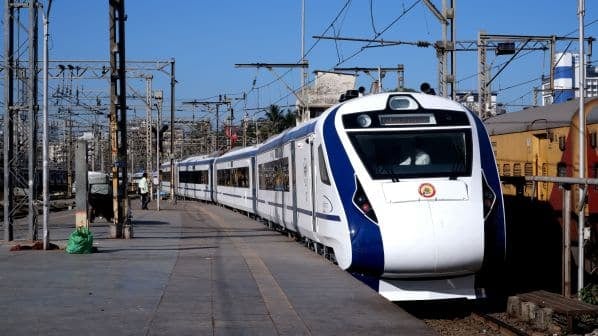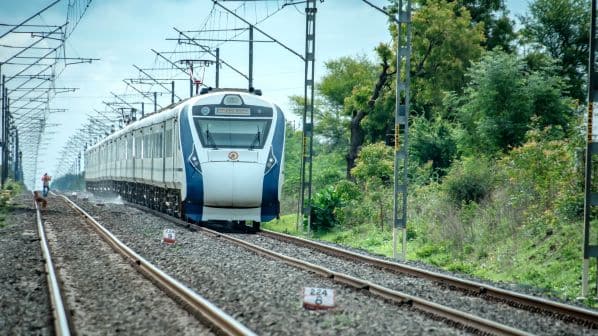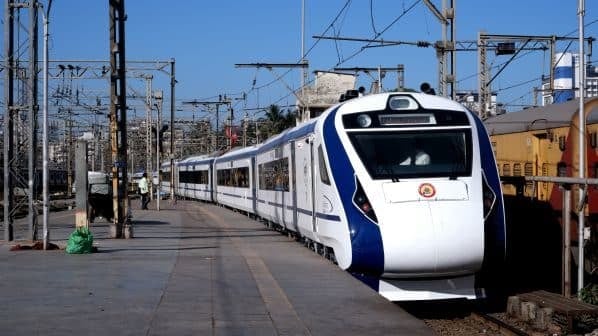INDIAN Railways (IR) has unveiled a push-pull variant of the Vande Bharat EMU that will be introduced on the country's mainline rail network this month, targeting the low-income passenger market.
The new 22-car Vande Sadharan (Vande Ordinary) will have capacity for a total of 1800 passengers, with 18 unreserved and four reserved non-air-conditioned coaches and a top speed of 130km/h, which is lower than the design speed of 160km/h of the Vande Bharat.
While each Vande Bharat train costs Rs 1.2bn ($US 14.6m), the Vande Sadharan reportedly costs Rs 600m.
The train has a 4.4MW locomotive at either end, featuring a streamlined nose, which were manufactured at a cost of Rs 280m at the West Bengal-based Chittaranjan Locomotive Works (CLW) and moved to the Chennai-based Integral Coach Factory (ICF) to be formed into trains with German-designed LHB coaches.
Two Vande Sadharan trains arrived at Mumbai's Wadi Bunder yard on October 29 for trials on the 169km Mumbai - Nashik corridor, with a particular emphasis on performance while negotiating hilly terrain.
The first Vande Sadharan is likely to operate on the New Delhi - Mumbai route.
“Depending on the passenger response, additional numbers of the Vande Sadharan trains will progressively be introduced,” IR officials said. Compared with conventional passenger trains currently in operation, the Vande Sadharan will have improved interiors and passenger amenities including automatic doors, bio-toilets and modern radio communications systems.
While IR officials are upbeat that the budget-friendly Vande Sadharan option will address concerns of more price-conscious passengers, some experts disagree.
“In India's hot climatic conditions, the introduction of non-air-conditioned trains appears to be a regressive move,” says former ICF general manager, Mr Sudhanshu Mani. “The Vande Sadharan trains, with their dual engines, will also be less energy efficient.” Mani added that instead of equipping the trains with luxurious features such as automatic doors, the Vande Sadharans could have been fitted with air-conditioning instead.
Former railway board member, Mr Subodh Jain, concurred, saying that while the Vande Sadharan did make business sense, the lack of air-conditioning in coaches was a downside. He said the positives were that the cost per seat of the Vande Sadharan would be 25% less than fares for the premier Vande Bharat trains, while the operations and maintenance costs were also likely to be much lower. Jain said the production of the Vande Sadharan trains should be ramped up after the provision of air-conditioning in the coaches.
“34 Vande Bharat trains have so far been introduced, but none of these have been able to maximise their speed potential because of IR's infrastructure limits,” he said. “It might be a better idea to run 130km/h trains at this juncture.”
The 16-car Vande Bharat trains have also come in for criticism in rail circles, largely because of the low occupancy reported on several routes. “These trains have randomly been introduced without much attention to passenger demand,” said a former IR official who wished to remain anonymous.
For detailed data on fleet orders from around the world, subscribe to IRJ Pro.



